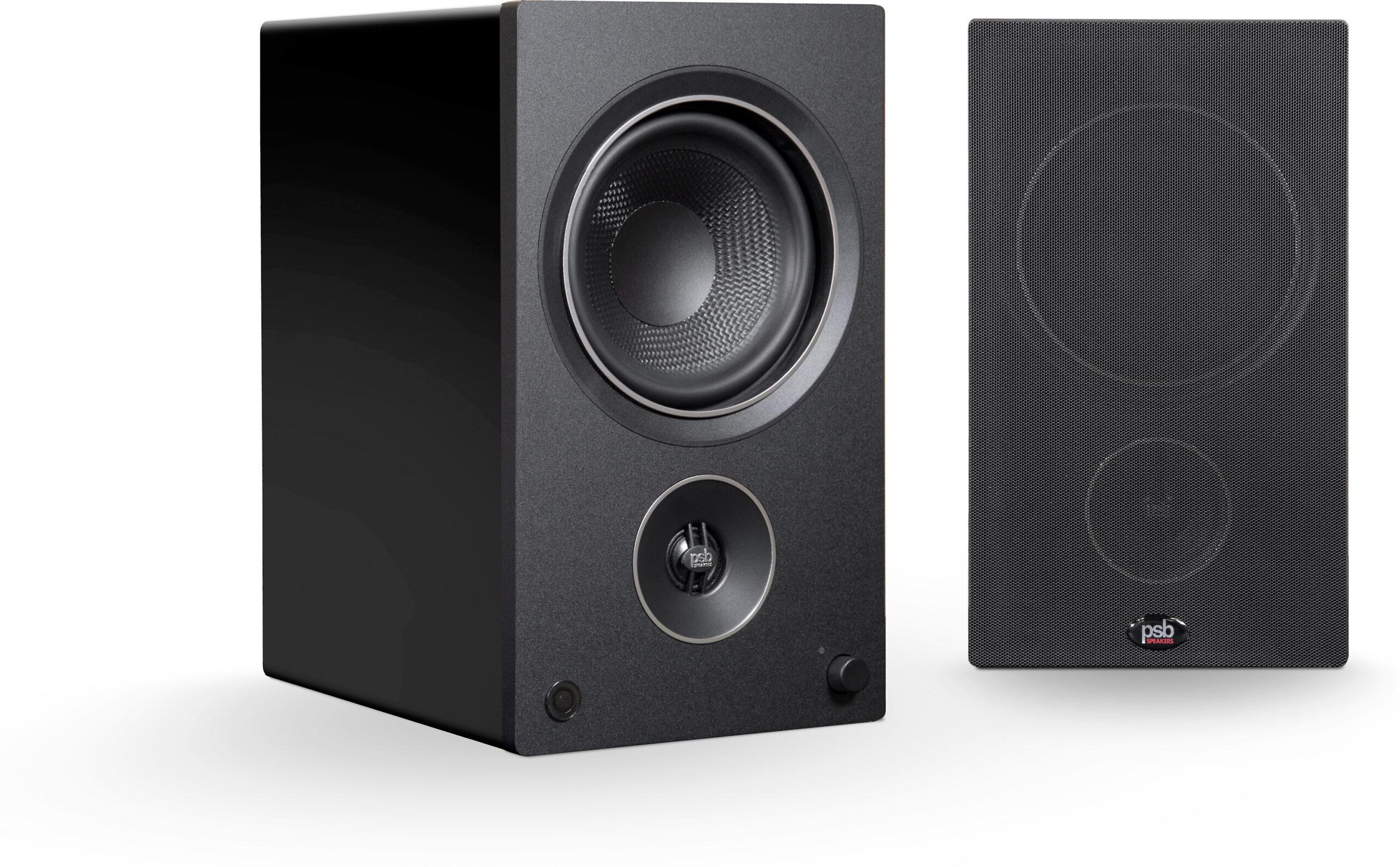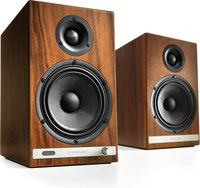- Great Looking: Kanto TUK Powered Speakers - Check Price
- More Inputs (TV): Klipsch The Fives - Classic Looks and Modern Sound - Check Price
- Best Premium Sound: KEF LS50 Wireless Speakers - Check Price
- Dedicated Phono Input: PSB Alpha AM 5 Speakers - Check Price
- Great Bass: Audioengine HD6 Powered Speakers - Check Price
Today's record players no longer need to be connected to a tower of electronics housed in a glass cabinet, filled with knobs and levers and buttons of questionable value. Now, thanks to all-in-one active speaker systems, the only thing coming between your collection of vinyl records and your ears is a simple system consisting of a record player and self-powered stereo speakers.
Powered stereo speaker systems offer an easy path to getting great sound for your vinyl. All you need in order to relax are a pair of active stereo speakers, a good turntable, and a comfortable chair. And when you just want to browse music to decide what album to pick up next in the LP format, these speakers also accommodate streaming. Unless you are invested in an old-school style big stereo system, it's entirely possible that your musical needs will be fully satisfied by a pair of active bookshelf speakers such as the ones featured here.
Vinyl records have been used by music fans for over seven decades to unwind and listen to their favorite artists. An almost unfathomable variety of music is available on vinyl, and that includes new releases. whether vinyl records sound better than digital is certainly the subject of much debate that could ultimately be chalked down to subjective opinion, but it is reasonable and accurate to say that an album mastered for vinyl is mastered differently than an album mastered for CD, or for streaming.
What to Consider When Buying Speakers for Turntables
Certainly, one of the first considerations in buying a powered stereo speaker is budget. Many of these speaker options are more budget-friendly, so to speak, as compared to a system with a separate receiver, preamplifier plus amplifier or integrated amplifier, and passive speakers. This classic approach to a system remains the most customizable. But, part of the appeal of powered stereo speakers, aside from simplicity and affordability, is the compact nature of these systems—you can fit great sound almost anywhere.
- Know how much space you have for your speakers
- Will they be up against the wall? Avoid rear-ported models
- Is there a dedicated phono input? If not, will you need a phono preamp or is it built into your turntable?
- What other types of connectivity do you want from the speakers? Bluetooth? USB?
- Do the speakers come with a remote control?
- Is the power cord detachable? How long is it?
Next up among considerations is performance. Within a given budget, you will be able to buy a certain degree of capability. How much you get for your dollar can vary significantly, with one speaker you might pay for connectivity and aesthetics, and for another speaker all your money goes into amplification and drivers, and a robust cabinet. It really depends on the use case that the speaker is designed for. If you want state-of-the-art features, good looks, and high performance—all in one package—usually that comes at a higher cost. But remember, spending more doesn't always get you more, there are bargains out there. Especially if you take into consideration sale prices.
Judging performance is the most difficult aspect of evaluating speakers. One major reason for this is different expectations and different tastes. While there is a certain sound profile that is preferred by a majority of people—knowledge gained as a result of many years of research by Harman—it is still true that some listeners like it loud, others like their music quiet, some listen close to the speakers, others sit far away, all this plus the room come into play.
Even if you have the most accurate measurements and specifications, and even if you audition speakers in person in the store, and all the reviewers love it, there are no guarantees that you are going to love what you hear until you have a system set up in the room where you plan to use it, feeding the music plan to listen to, from the source you plan to use, sitting where you plan to sit. That's how specific things are! Ultimately, that variability in the individual experience could mean sending back speakers if you don't love them. Consequently, one factor to consider in a purchase is the return policy.
Going into the search for new speakers already knowing key parameters will give you a clearer idea of what to try and make the process of ultimately finding the best speaker a bit easier.





























